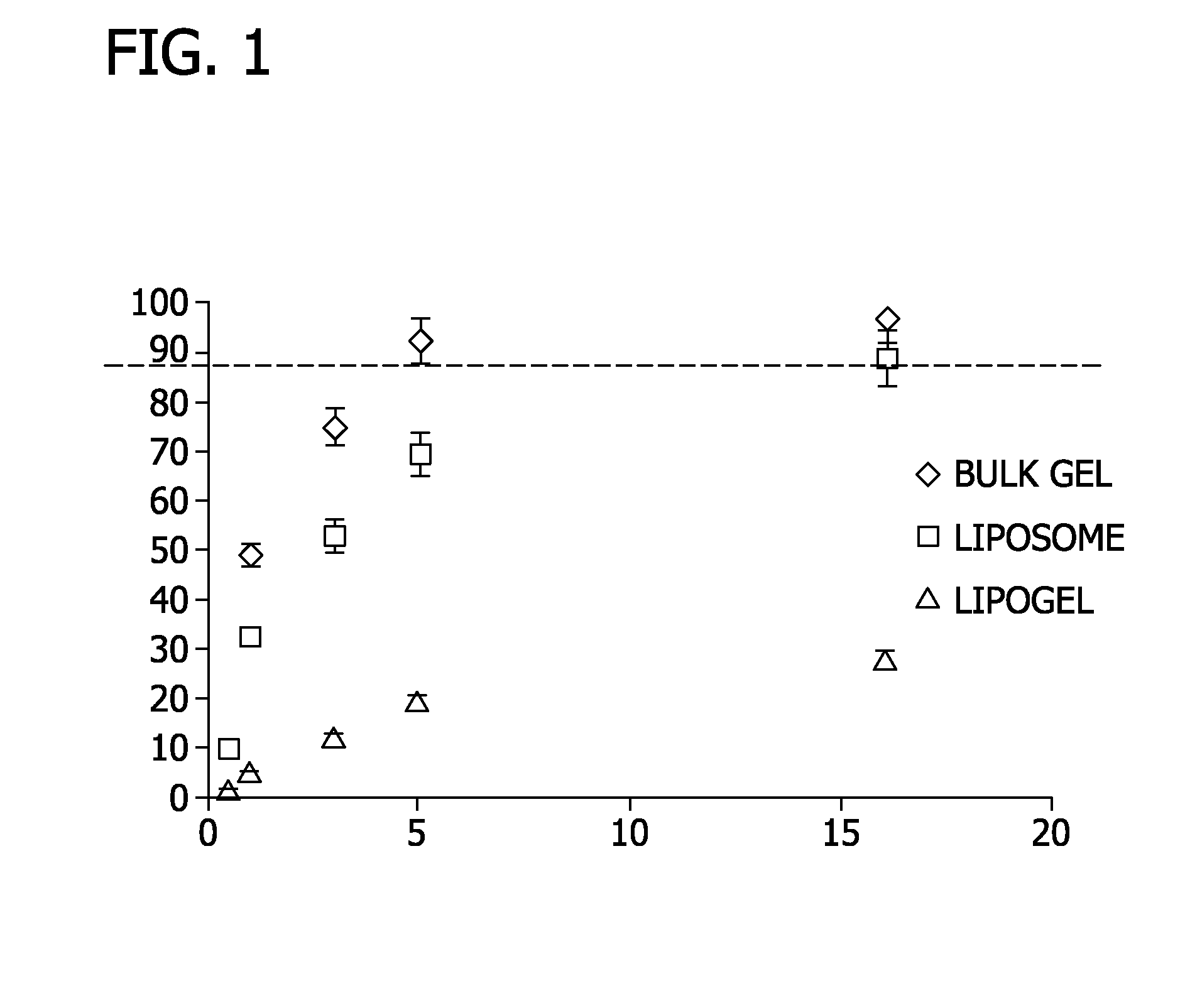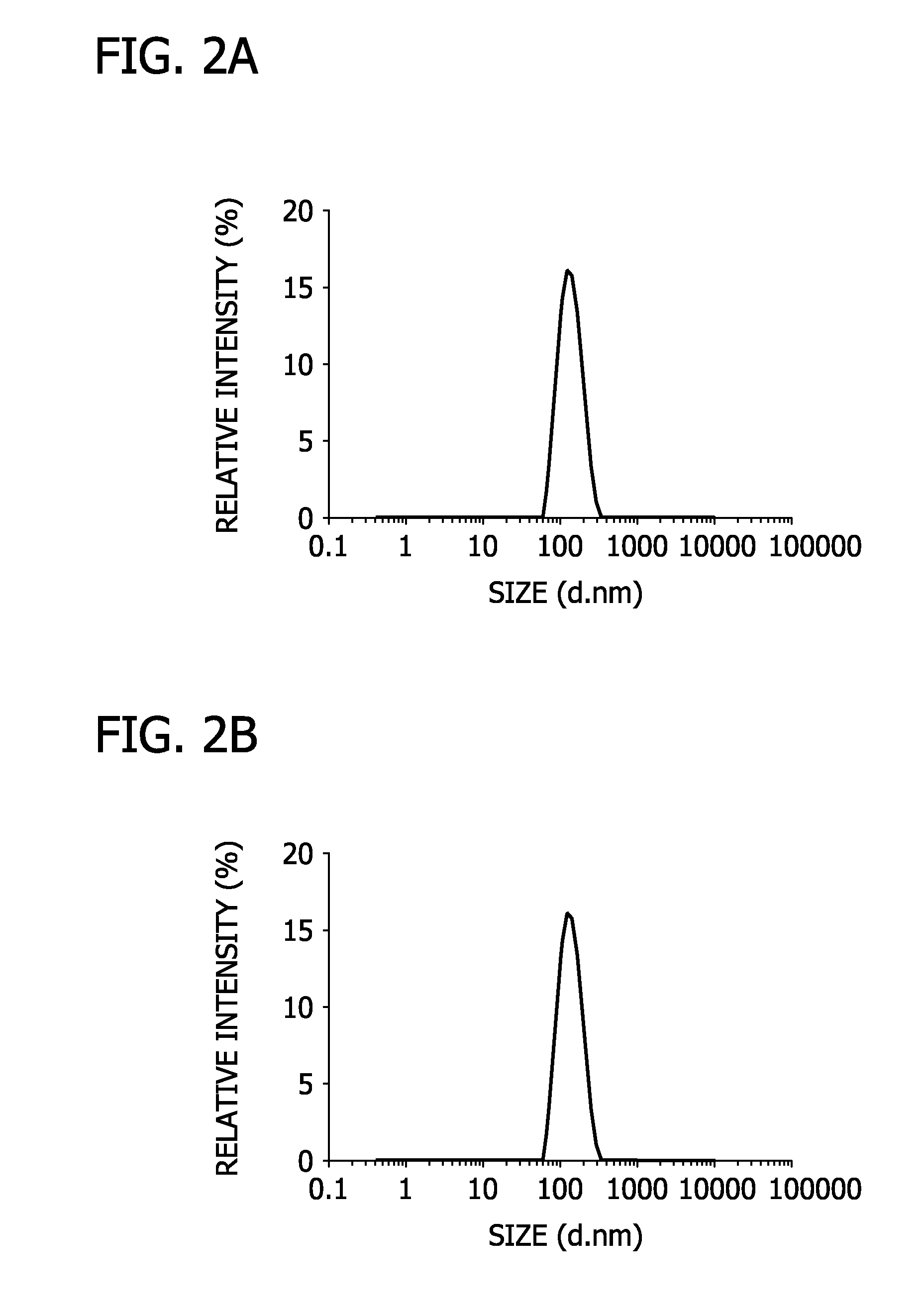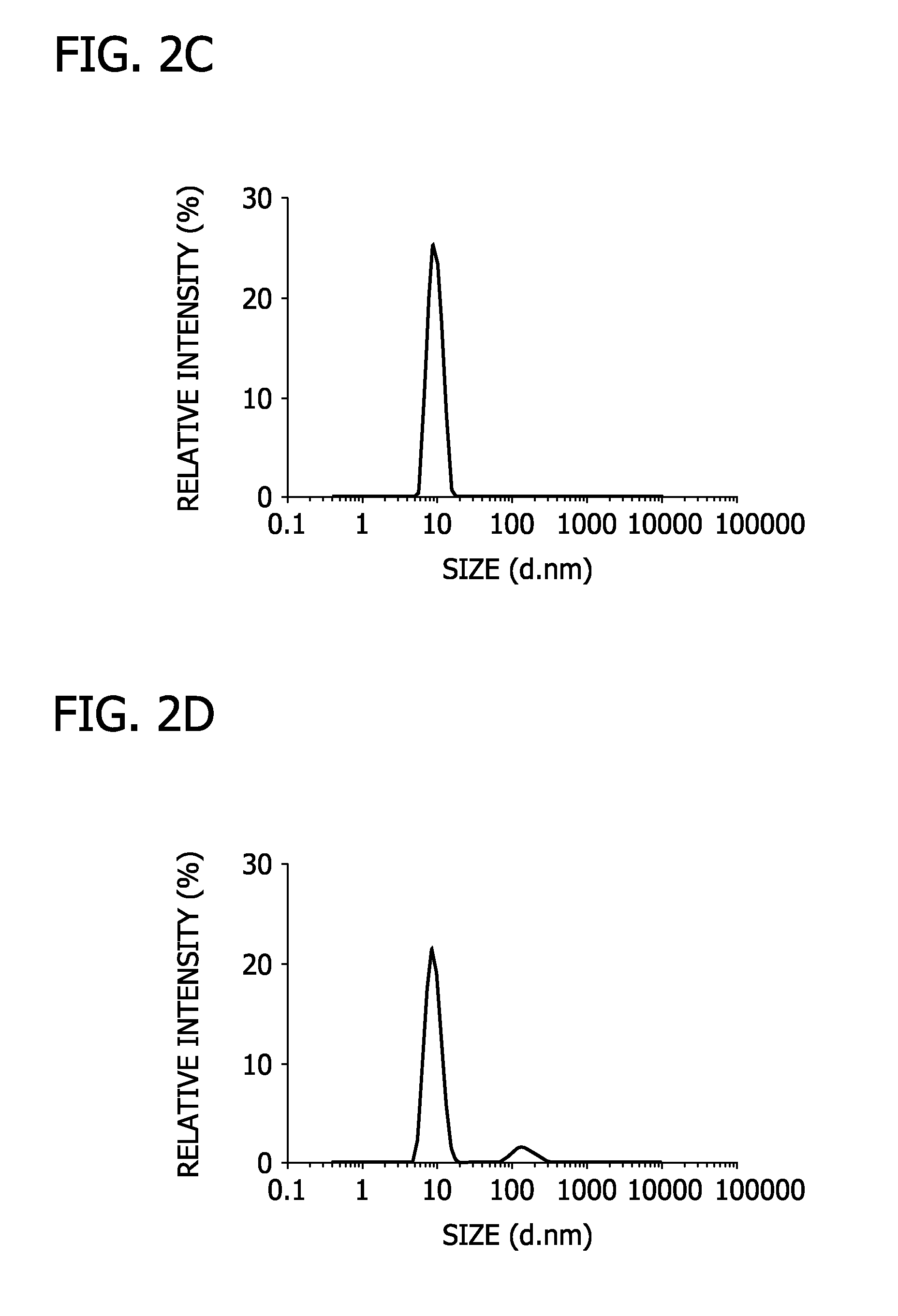Liposome-encapsulated hydrogels for use in a drug delivery system
a technology of liposome and hydrogel, which is applied in the direction of capsule delivery, heterocyclic compound active ingredients, biocide, etc., can solve the problems of limited use of hydrogels as drug delivery systems, low tensile strength of hydrogels, and general fast leakage rate of drugs, so as to achieve sustained release of drug molecules, high drug loading, and mechanical strength. the effect of strength
- Summary
- Abstract
- Description
- Claims
- Application Information
AI Technical Summary
Benefits of technology
Problems solved by technology
Method used
Image
Examples
example 1
[0063]In this Example, lipogels of the present disclosure were prepared.
[0064]Specifically, bulk hydrogel precursors were prepared by ultraviolet-initiated polymerization of aqueous solutions of acrylic acid (AA; Sigma-Aldrich), N,N′-methylenebis(acrylamide) (BA; Sigma-Aldrich) as a cross-linker, and 1% w / v 2,2-diethoxyacetophenone (DEAP; Sigma-Aldrich) as an initiator. The sample was treated with a 100 W Blak-Ray high intensity UV lamp (Mineralogical Research Co, CA) for 90 seconds. Large unilamellar liposomes were prepared with dipalmitoylphosphatidylcholine (DPPC) and cholesterol (Chol) in a 3:1 molar ratio using direct hydration and extrusion. Particularly, a liposome film was hydrated with 1 mL 10 mM HCl solution containing the hydrogel precursors. The resulting hydrogel precursor-liposome suspension was extruded through a micro-extruder (Avanti Polar Lipid) equipped with a 100 nm pore size polycarbonate filter.
[0065]The extruded suspension includes the liposomes having a unimo...
example 2
[0066]In this Example, drug loading and release from lipogels was compared to drug loading and release from liposomes and un-encapsulated hydrogels.
[0067]Lipogel and liposome preparations prepared according to Example 1 were incubated in 1 mL 17-DMPAG drug solution (pH 6.5 HEPES buffer). After 6 hours incubation at room temperature, samples were passed through a Sephadex G50 column to remove unincorporated free drugs. The drug-loaded lipogels and drug-loaded liposomes were dissolved in 2-Propanol before HPLC quantitation. In vitro drug release studies were conducted by dialyzing drug-loaded lipogels or drug-loaded liposomes against 400 mL pH 6.5 HEPES buffer.
[0068]Bulk hydrogel (un-encapsulated hydrogel) prepared according to Example 1 was incubated in 1 mL 17-DMPAG drug solution (pH 6.5 HEPES buffer). After 6 hours, samples were centrifuged to remove unloaded free drugs. The drug concentration in the supernatant was analyzed to determine drug loading percentage. The drug loaded-hyd...
example 3
[0075]In this Example, lipogels of the present disclosure were prepared.
[0076]Sodium ascorbate, acrylic acid (AA), N-isopropyl acrylamide (NIPAm), N,N′-methylenebis(acrylamide) (BA), 2,2-diethoxyacetophenone (DEAP), 3-(dimethylamino)-1-propylamine and Triton X-100 were purchased from Sigma-Aldrich. Geldanamycin was obtained from LC Solutions. Thin-layer chromatography was performed using DC-Alufolien Kieselgel 60 F254 plates (EMD Chemicals, Darmstadt, Germany). Visualization was achieved by UV light (254 nm) and with ceric molybdate stain activated by heat. For flash chromatography, silica gel 40-63 μm from EMD Chemicals (Darmstadt, Germany) was used. 1H NMR spectra were acquired on Varian Inova 500 spectrometer. Chemical shifts are reported in parts per million (ppm) relative to tetramethylsilane, and spin multiplicities are given as s (singlet), d (doublet), t (triplet), q (quartet), m (multiplet), or br s (broad singlet). High-resolution mass spectra were obtained on an IonSpec 7...
PUM
| Property | Measurement | Unit |
|---|---|---|
| size | aaaaa | aaaaa |
| pH | aaaaa | aaaaa |
| pH | aaaaa | aaaaa |
Abstract
Description
Claims
Application Information
 Login to View More
Login to View More - R&D
- Intellectual Property
- Life Sciences
- Materials
- Tech Scout
- Unparalleled Data Quality
- Higher Quality Content
- 60% Fewer Hallucinations
Browse by: Latest US Patents, China's latest patents, Technical Efficacy Thesaurus, Application Domain, Technology Topic, Popular Technical Reports.
© 2025 PatSnap. All rights reserved.Legal|Privacy policy|Modern Slavery Act Transparency Statement|Sitemap|About US| Contact US: help@patsnap.com



